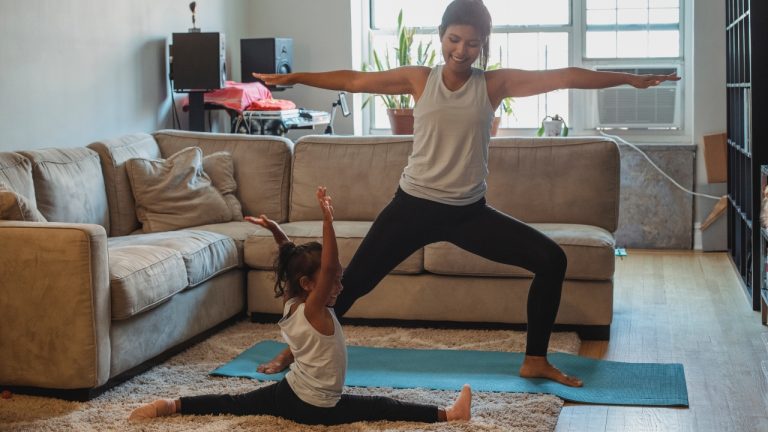Hormone Balancing Yoga Sequence

A hormone-balancing yoga sequence can help regulate the endocrine system and support overall hormonal health. Here’s a simple and effective sequence that focuses on poses known for their hormone-balancing benefits:
Child’s Pose (Balasana): Begin in Child’s Pose to center yourself and connect with your breath. This calming pose helps reduce stress and promotes relaxation, which is beneficial for hormone balance.
Cat-Cow Pose (Marjaryasana-Bitilasana): Move into Cat-Cow Pose to warm up the spine and stimulate the reproductive organs. The gentle arching and rounding of the back enhance circulation in the pelvic area.
Wide-Legged Forward Fold (Prasarita Padottanasana): Step into a wide-legged stance and fold forward, reaching your hands towards the floor. This pose stretches the inner thighs and stimulates the pelvic region.
Cobra Pose (Bhujangasana): Lie on your belly, place your hands beneath your shoulders, and lift your chest into Cobra Pose. This gentle backbend helps open the chest and can stimulate the thyroid gland.
Seated Forward Fold (Paschimottanasana): Sit with your legs extended forward and fold over your legs. This pose stretches the hamstrings, stimulates the abdominal organs, and can help relieve stress.
Butterfly Pose (Baddha Konasana): Sit with the soles of your feet together and gently press your knees towards the floor. Butterfly Pose stimulates the ovaries and helps balance the reproductive system.
Bridge Pose (Setu Bandhasana): Lie on your back, bend your knees, and place your feet flat on the floor. Lift your hips towards the ceiling to come into Bridge Pose. This backbend opens the chest and stimulates the thyroid gland.
Supported Shoulderstand (Salamba Sarvangasana): Use props like a blanket or bolster to support your shoulders and lift your legs into the Shoulderstand. This inverted pose stimulates the thyroid gland and can help balance hormone levels.
Legs Up the Wall (Viparita Karani): Lie on your back with your legs resting against a wall. This gentle inversion promotes blood circulation to the pelvic area and can help reduce stress.
Reclining Bound Angle Pose (Supta Baddha Konasana): Lie on your back, bring the soles of your feet together, and let your knees fall open to the sides. This restorative pose helps release tension in the hips and pelvic region.
Corpse Pose (Savasana): End your sequence in Savasana to allow your body to integrate the benefits of the practice and promote overall relaxation.
Remember to focus on deep, steady breaths throughout the sequence, as controlled breathing can have a positive impact on hormone regulation. Practice this sequence regularly to support hormonal balance, but keep in mind that yoga is a complement to, not a substitute for, professional medical advice. If you have specific hormonal concerns, consult a healthcare provider for personalized guidance.



